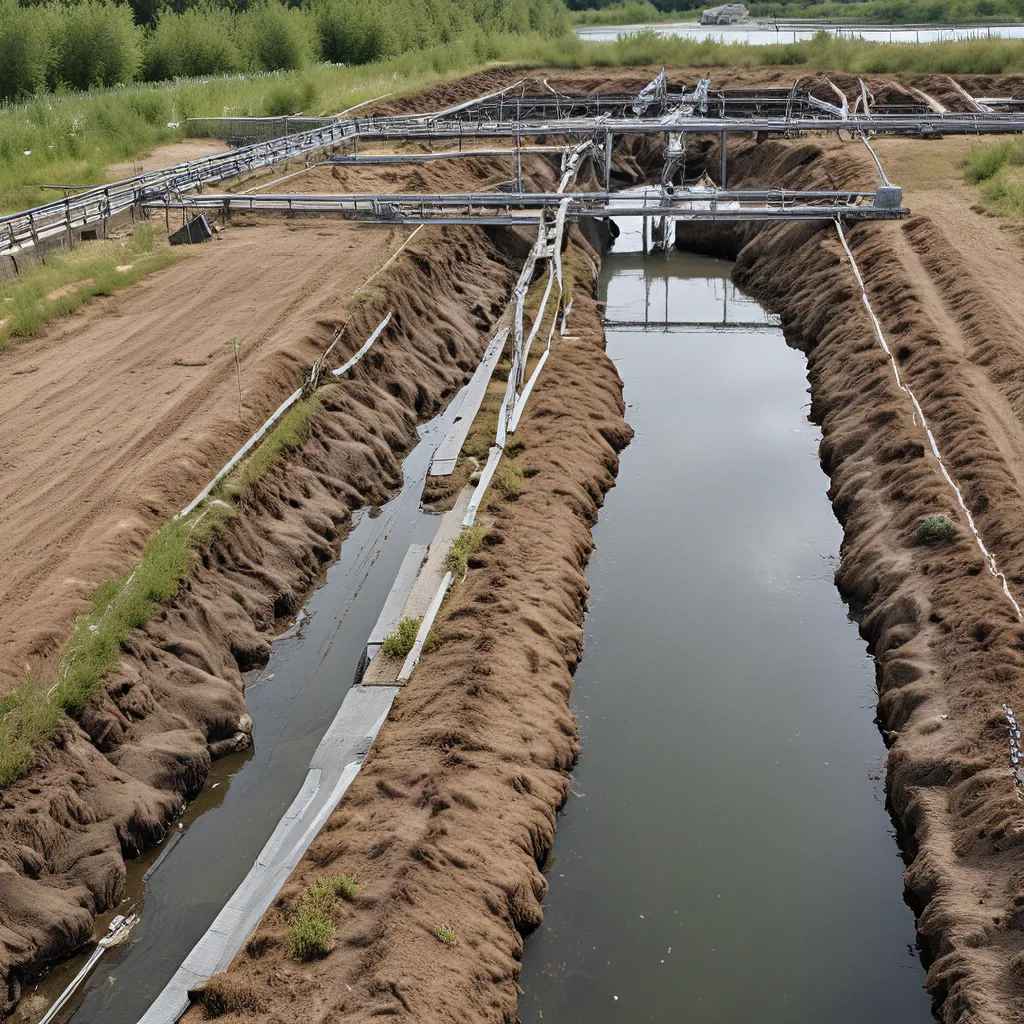
“Have you ever stopped to think about the hidden treasures lurking in our wastewater? I certainly hadn’t, until I started digging deeper into the world of anaerobic biotechnology and the circular bioeconomy. Let me tell you, the possibilities are downright mind-boggling!”
As someone who’s always been fascinated by the intersection of science, technology, and environmental sustainability, I’ve been closely following the rapid advancements happening in the field of wastewater treatment. And let me tell you, the future looks bright – or should I say, green?
Unlocking the Potential of Waste Streams
You see, our society has an enormous untapped potential when it comes to recovering renewable bioenergy and bioproducts from waste streams. Not only can we reduce our dependence on fossil fuels, but we can also dramatically minimize the environmental impact of waste disposal. It’s a win-win situation, if you ask me.
The key to unlocking this potential lies in the revolutionary advances happening in systems and synthetic biology. Thanks to breakthroughs in metagenomic sequencing, high-resolution mass spectrometry, and genome editing, we’ve gained unprecedented insight into the complex metabolic and regulatory networks that drive the functions of microbial communities and microbiomes.
“But how do we turn this newfound knowledge into real-world applications?” you might ask. Well, that’s where the brilliant minds at the Microbiome Engineering Lab come into play.
Systematic Engineering of Microbiomes
These researchers are laser-focused on creating novel anaerobic biotechnologies that can recover valuable resources, energy, chemicals, and materials from waste streams. Their approach combines the power of systems and synthetic biology with cutting-edge automation and machine learning to engineer microbiomes that are tailored to the task at hand.
“Wait, you’re telling me we can engineer microbiomes now?” Absolutely! While traditional microbiome engineering has often relied on a more passive approach of manipulating environmental variables, the team at the Microbiome Engineering Lab is taking things to the next level.
They’re developing high-throughput methods that allow them to systematically assemble and analyze synthetic anaerobic microbiomes, all with the goal of producing a wide range of valuable bioproducts from waste streams at commercially viable titers, rates, and yields. Talk about a game-changer!
Unlocking the Secrets of Anaerobic Microbiome Metabolism
Of course, achieving this lofty goal isn’t as simple as it may sound. Despite decades of research into anaerobic microbiome metabolism, our understanding of the interwoven metabolic networks that drive the conversion of organic matter into bioproducts remains frustratingly incomplete.
That’s why the researchers at the Microbiome Engineering Lab are taking a deep dive into the systems-level analysis of metabolic regulation in anaerobic microbiomes and associated anaerobic microorganisms. Using cutting-edge metabolomic and metaproteomic approaches, coupled with isotope tracing and quantitative metabolic modeling, they’re working to unravel the complex web of interactions and fluxes that govern these fascinating microbial communities.
“Sounds pretty technical, doesn’t it?” I know, it’s a lot to take in. But trust me, the implications of this research are anything but dry and academic. By gaining a quantitative understanding of microbiome metabolism and the metabolic regulation of key anaerobic microorganisms, these scientists are paving the way for accelerated process reaction rates, maximized bioproduct yields, and improved process stability in wastewater treatment and solid waste management.
The Circular Bioeconomy in Action
And the best part? This isn’t just some far-fetched, futuristic vision – it’s already happening in the real world. Take a look at the work being done by companies like Alpha Wastewater, for example.
By combining multiple technologies, these innovative players are helping industries unlock the biogas production potential of their process effluents, transforming wastewater from a liability into a valuable renewable energy resource. And the benefits don’t stop there – they’re also helping to reduce waste disposal costs and drive circularity across municipal and industrial projects.
“Okay, so this is all great, but how does it fit into the bigger picture?” Well, my friend, that’s where the circular bioeconomy comes into play. As the European Commission has recognized, there’s an enormous potential for municipalities and industries to produce biomethane from wastewater, which could contribute a staggering 170 Terawatt-hours to the EU’s renewable energy mix.
Imagine a world where wastewater treatment plants are no longer just facilities for cleaning water, but are energy production hubs that help power our communities. It’s a future that’s not only technologically feasible, but one that’s being actively pursued by forward-thinking companies and municipalities around the globe.
The Future is Bright (and Green)
So, what’s the takeaway here? Wastewater treatment is no longer just about cleaning up our mess – it’s about unlocking the hidden potential of our waste streams and transitioning to a more sustainable, circular bioeconomy.
Thanks to the innovative work happening in labs and companies around the world, we’re on the cusp of a renewable energy revolution that could transform the way we think about waste. And who knows, with a little bit of bioengineering magic, maybe one day we’ll be sipping our morning coffee made from recycled wastewater. (Okay, maybe that’s a bit too far-fetched, even for me!)
But in all seriousness, the future of wastewater treatment is bright, and it’s up to all of us to embrace the possibilities and support the research that’s paving the way for a more sustainable tomorrow. So, what are you waiting for? Let’s dive in and explore the wonders of the circular bioeconomy!